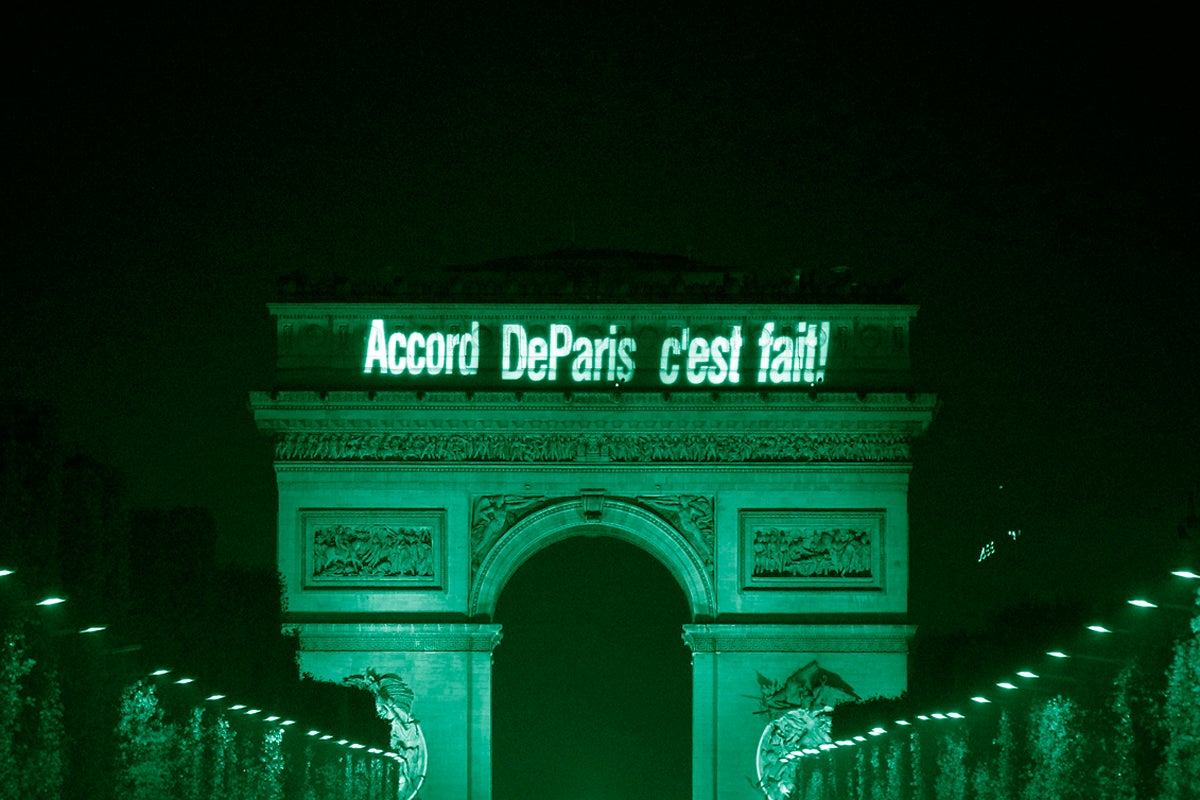Paris Agreement: What is the importance of the global climate deal?
Where does the global effort stand in preventing a dangerous climate crisis?

Your support helps us to tell the story
From reproductive rights to climate change to Big Tech, The Independent is on the ground when the story is developing. Whether it's investigating the financials of Elon Musk's pro-Trump PAC or producing our latest documentary, 'The A Word', which shines a light on the American women fighting for reproductive rights, we know how important it is to parse out the facts from the messaging.
At such a critical moment in US history, we need reporters on the ground. Your donation allows us to keep sending journalists to speak to both sides of the story.
The Independent is trusted by Americans across the entire political spectrum. And unlike many other quality news outlets, we choose not to lock Americans out of our reporting and analysis with paywalls. We believe quality journalism should be available to everyone, paid for by those who can afford it.
Your support makes all the difference.On 12 December, 2015, for the first time in history, the world united behind a pact to tackle the climate crisis: The Paris Agreement.
The legally-binding treaty, was adopted at the 21st session of the Conference of the Parties to the United Nations Framework Convention on Climate Change (UNFCCC), informally known as COP 21, in the French capital.
The collective pursuit, of 196 countries, is to limit global heating well below 2C above preindustrial levels, and aim for 1.5C, a target which is moving increasingly out of reach.
The human-driven climate crisis has already caused about 1.2C of global heating above pre-industrial levels. The World Meteorological Organisation says there is a 20 per cent chance that global temperatures will hit 1.5C in at least one year between 2020-2024.
Countries set their own goals, aiming for a global peak in greenhouse gas emissions as soon as possible, and “a climate neutral world by 2050”, says the UN.
What are the goals of the Paris Agreement?
The Paris Agreement sets out how nations will get to work on their commitments under the UNFCCC after 2020.
The UNFCCC, which dates to 1992, is an international treaty involving almost every country, which laid the groundwork for the global effort to tackle the climate crisis. The goal is to avoid “dangerous human interference with the climate system".
At the heart of the Paris deal are nationally determined contributions (NDCs) - countries’ pledges to reduce emissions.
Current pledges are not enough to meaningfully tackle the crisis, so the Paris agreement has a “ratchet mechanism”, meaning each nation must come up with a bolder target for reducing emissions every five years.
Is the Paris Agreement working?
It’s a mixed bag. Since the Paris deal was struck, emissions have continued to rise.
Still no country is doing enough to achieve the Paris targets, according to the 2021 Climate Change Performance Index which tracks the progress of 57 countries plus the EU. Together, they account for around 90 per cent of global greenhouse gas emissions.
The world is on a pathway to temperature rise in excess of 3C this century, despite a pandemic-related dip in emissions, a UN Emissions Gap Report stated.
There are reasons to be hopeful: The “Paris effect” has led to an unexpectedly rapid shift towards a low-carbon economy.
The plummeting price of renewable sources of electricity, such as solar and offshore wind, has made low-carbon power “cost-competitive” when compared to fossil fuels – at a greater speed than once thought possible, according to a report by global climate consultancy, Systemiq.
The rise of cheap renewable power means “zero-carbon solutions” are now competitive in a sector representing around 25 per cent of global emissions, the report said. This change happened in just five years, it added.
Can the Paris Agreement pressure countries to do more?
The Paris Agreement sets out deadlines so that countries keep up their ambitions.
Along with the “racheting” NDCs every five years, the first major moment will be the “global stocktake” in 2023 to assess collectively what progress has been made.
By the end of 2023, high-level representatives from each country will be presented with the achievements, or perhaps more importantly the lack thereof, so they can figure out what’s next in ramping up climate action.
In UN-speak, there is also an “enhanced transparency framework” - a plan for keeping countries accountable to their emissions targets. From 2024, countries are expected to provide transparent reports on what they’ve done to reduce emissions and adapt to the crisis, along with the support they’ve provided or received.
The information gathered will be analysed by independent climate experts and feed into the next stocktake to figure out what collective progress has been made.
The Paris deal also has a facet to “facilitate implementation and promote compliance”.
The idea is that a committee of climate experts can help countries who are falling behind in their targets, and figure out a plan to get them back with the program. But there are no penalties for noncompliance.
Join our commenting forum
Join thought-provoking conversations, follow other Independent readers and see their replies
Comments